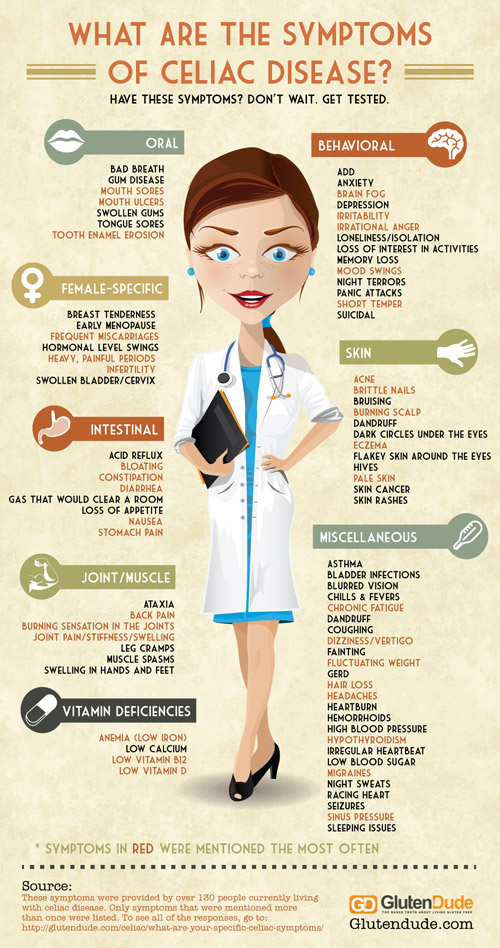
As seen in Women's Lifestyle Magazine's July/August 2012 Edition.
BREAD IS YUMMY
When I speak to people who are newly diagnosed with a gluten allergy, sensitivity, or celiac disease, they nearly all say, “I miss bread!” Bread has become a huge part of our food culture. The gluten in bread helps make it taste really good. It lends flavor, elasticity, and general “yumminess.” Bread is a comfort, a joy. Don’t take away my bread!! But alas, we need alternatives. With multiple allergies on the rise as well, these alternatives must be creative.
WHY “GOOD” ALLERGEN-FREE BREAD IS DIFFICULT TO FIND (AND MAKE)
Pastry Chef, Kyra Bussanich is the first Gluten-free winner of the Food Network’s Cupcake Wars.
She owns CRAVE BAKE SHOP in Lake Oswego, Oregon and is a guest  writer for The Tender Palate. I asked Kyra why allergen-free bread is so tough to make:
writer for The Tender Palate. I asked Kyra why allergen-free bread is so tough to make:
There are three legs to fantastic baking: gluten, eggs, and sugar. Each contributes something to the texture and structure of the final product, and when you have already replaced one of the legs of the stool, it makes it more difficult to successfully swap out the remaining two legs without adversely affecting flavor or texture (or both). This is why gluten-free and egg-free baking presents such a challenge.
~Kyra Bussanich, Owner of Crave Bake Shop
The good news is that you don’t have to travel to Oregon to get your comfort on. Here are a two of my favorite breads that you can get off the shelves in your ‘hood and one of my favorite sweet bread recipes that people have been loving.
MY FAVORITE BREAD MIXES
Breads From Anna – Bread Mix (All Purpose Flour Blend)
*Free of Gluten, Yeast, Corn, Dairy, Soy, Nuts, Peanuts, Rice, and GMO
 I absolutely love this bread mix. It is sensuous, tasty, and versatile. I’ve used it for open-faced sandwiches, I’ve eaten it plain, and I’ve made stuffing out of it. It is the ultimate comfort bread with or without any kind of butter. Pictured at top is Anna’s sandwich bread, which is lighter and has a bit more structure to it. The All Purpose Flour Blend is fairly dense, which I happen to like, and this is the best bean flour bread that I’ve ever tasted. A side benefit of the Breads from Anna mixes is that they are high in protein and fiber, and quite nutritious! So pay attention if you are a carbo-loader, this bread will make things happen, if you know what I mean. The mixes are easy to make, and though a bit pricey, they are totally worth it, kids.
I absolutely love this bread mix. It is sensuous, tasty, and versatile. I’ve used it for open-faced sandwiches, I’ve eaten it plain, and I’ve made stuffing out of it. It is the ultimate comfort bread with or without any kind of butter. Pictured at top is Anna’s sandwich bread, which is lighter and has a bit more structure to it. The All Purpose Flour Blend is fairly dense, which I happen to like, and this is the best bean flour bread that I’ve ever tasted. A side benefit of the Breads from Anna mixes is that they are high in protein and fiber, and quite nutritious! So pay attention if you are a carbo-loader, this bread will make things happen, if you know what I mean. The mixes are easy to make, and though a bit pricey, they are totally worth it, kids.
Though Breads for Anna has not gone for certification, each ingredient is tested prior to making it to her factory. She has a completely gluten-free processing plant and does not process any of the top eight allergens in her factory.
“I have Celiac Disease and Type I Diabetes. I knew a lot of people needed this and I eat my own products. I feel a lot of responsibility to my customers. You have to be committed in this market. When I say it’s GMO-free and Gluten-free, I mean it.”
~Anna Sobaski, Owner, Breads from Anna
Chebe – All Purpose Bread Mix
*Gluten-free, can be made Dairy-free. Does not contain any rice, nuts*, dairy or yeast (see below for processing).

Oh, this bread is wonderful. It is a little crusty on the outside with a wonderfully soft, chewy texture in the middle. It lends such a nice flavor to the sandwich itself, and has a truly crave-worthy texture. I first used it as a hamburger bun and it even held the olives and the organic ketchup on the burger. No mess! I’ve since used it for chicken salad, turkey, and a BLT!
I first saw a Facebook advertisement for Chebe and was intrigued. I wrote to the company for a sample and they immediately sent me a few mixes. This was fantastic because I was able to make their products several times. I found it easier to work the bread with a little olive oil already on my hands. Kneed this dough well. It will feel like normal gluteny/yeasty dough, just a little stickier. If you do not use cheese (or even if you do) brush the top with olive oil to help it brown and add a sprinkle of sea salt to the top to round out the flavor. If you don’t use all of the resulting rolls, freeze them right away and they thaw and warm beautifully.
Though they do not test for anything but gluten (and they test to 5ppm which we love!), their mixes also do not contain a whole host of other common allergens like rice, nuts, yeast, dairy, etc. So compare your allergy needs to Chebe’s processing. Their factory line does have a separate, nut-free room, for instance, but it does not have a separate nut-free factory.
MY FAVORITE SWEET RECIPE: DUTCH CINNAMON BREAD
Copyright: Elisabeth Veltman
*Free of gluten, dairy, soy, rice, nuts, peanuts, yeast

Dutch Cinnamon Bread
This is a great recipe to make on special occasions or to bring to a brunch. It’s flavorful, and is a sweet, soft dessert bread. I find most gluten-free breads, even the good ones, to have a slight hole in the middle of the flavor. The sweet and spicy of this recipe fills that gap deliciously.
Pre-heat oven to 350 degrees
Bread Ingredients:
1 egg
1 cup sugar
1/4 cup sunflower, safflower or similar oil (a neutral oil is best, although coconut oil would work and lend a little coconut flavor)
1 cup GF teff flour
1 cup GF buckwheat flour
1/2 tsp. salt
1 tsp baking soda
1 can Thai Kitchen Coconut Milk (you need the can to include the coconut fat)
Topping / Swirling Ingredients
1/2 cup sugar
1 T. cinnamon
(In a prep bowl, mix these together and set aside.)
Grease a 9x5x3 loaf pan (use the same oil you are baking with). In a food processor or mixer, beat the egg, sugar and oil together until creamy. In a separate bowl, sift together the flour, salt and soda. Remove the coconut milk from the can into a bowl, and beat the fat into the rest of the milk. Add the flour mixture to the egg/sugar mixture alternatively with the coconut milk until blended. Pour 1/2 of the batter into the loaf pan. Sprinkle the top with 1/2 of the cinnamon sugar mixture. Add the rest of the batter to the pan, and then sprinkle the remaining cinnamon sugar over the top. Using a knife, swirl the sugar into the bread in a figure eight type pattern. Bake 1 hour. Cool for at least 30 min. then remove from the pan. Slice and serve. This bread freezes really well.
OTHER GLUTEN-FREE BREAD RESOURCES
 Reprinted with permission from Women's Lifestyle MagazineThere is a wonderful recipe site run by Elana Amsterdam. She has Paleo Bread Recipes that I adore.
Reprinted with permission from Women's Lifestyle MagazineThere is a wonderful recipe site run by Elana Amsterdam. She has Paleo Bread Recipes that I adore.
They are grain-free (made with nut flours, and high protein). Find them at www.elanaspantry.com
I’m not able to eat these breads because of my specific allergies, but my readers often tout these brands:
Udi’s multi-grain is a consistent favorite. Find them at www.udisglutenfree.com/
Genius Breads is a new favorite. Find them at www.geniusglutenfree.com
Rudi’s Gluten-Free Bakery at www.rudisglutenfree.com is another that is mentioned by readers.
ABOUT THE AUTHOR:
 Writer, owner of Blue Pearl Strategies, and lover of all culinary delights, Elisabeth is a Tender Foodie. She started The Tender Palate, a website for foodies with food allergies where she consults with experts from every area of the Tender Foodie life. She believes that everyone should live deliciously and have a healthy seat at the table. Find her at www.tenderpalate.com.
Writer, owner of Blue Pearl Strategies, and lover of all culinary delights, Elisabeth is a Tender Foodie. She started The Tender Palate, a website for foodies with food allergies where she consults with experts from every area of the Tender Foodie life. She believes that everyone should live deliciously and have a healthy seat at the table. Find her at www.tenderpalate.com.
 Friday, July 19, 2013 at 4:51PM
Friday, July 19, 2013 at 4:51PM  Elisabeth Veltman, The Tender Foodie tagged
Elisabeth Veltman, The Tender Foodie tagged  gluten sensitivity,
gluten sensitivity,  intolerace,
intolerace,  symptoms of celiac disease,
symptoms of celiac disease,  wheat allergies
wheat allergies  Email Article
Email Article  Print Article in
Print Article in  Celiac Disease,
Celiac Disease,  Food Allergy Facts,
Food Allergy Facts,  Health
Health 













